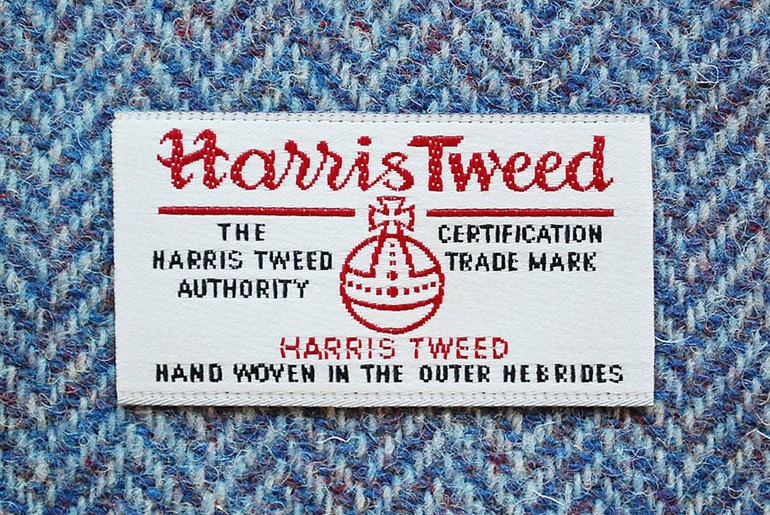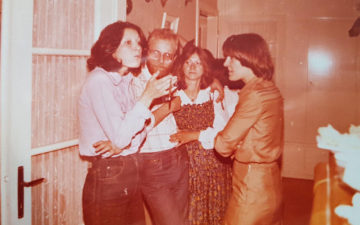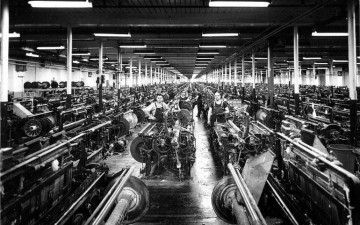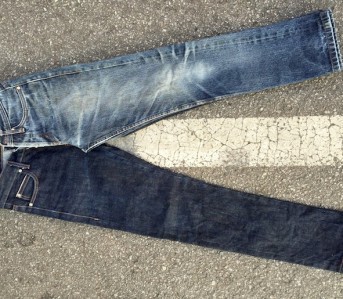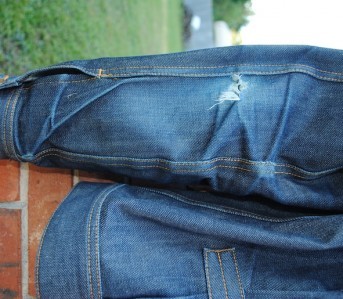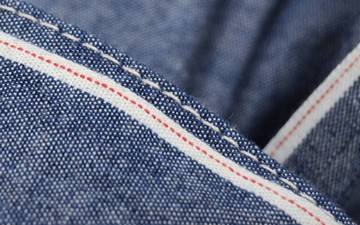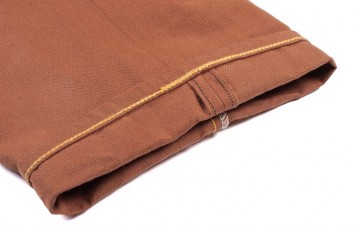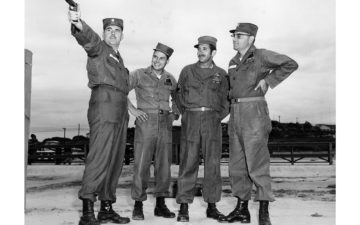With temperatures in many parts of the world are finally rising from the cold, dark depths of winter, we’re now taking a look at a famous fabric known for warming people up. Harris Tweed is unmistakeable due to its classic texture and appearance, and also remains unique in that it MUST be woven by hand by a small group of artisans in Scotland.
Traditionally Harris Tweed has been used in jackets, outerwear and suiting, but in the past decade brands have purposed the wool for things as out-there as footwear and interior design. Something else as undeniable as the fabric’s history is its skyrocketing popularity–it’s been used by more and more of these brands for more and more end uses all over the world. After you know the history of Harris Tweed and how it’s carefully produced, you’ll probably end up a champion of its rise as well!
The History of Harris Tweed
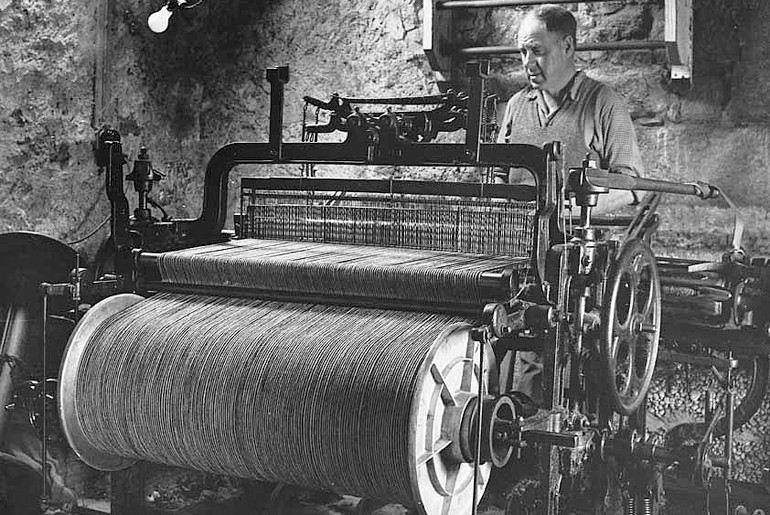
Harris Tweed weaver circa 1960 (c/o Wikipedia)
There’s no hard date for the “inception” of tweed, but it’s widely accepted that it’s been woven by the Scottish for centuries. What’s more important is that it’s a specific group of Scots who have woven the fabric, and that group consists of the inhabitants of of the Outer Hebrides. These “Western Isles” consist of the islands Lewis and Harris, the Uists, Benbecula and Barra. The people on these islands have handwoven pure virgin wool for hundreds of years, calling it Clò Mór in the original Scottish Gaelic, or “the big cloth.”
Before the Industrial Revolution, the wool fabric was woven for local uses and only sold at small markets. But in 1846, Lady Catherine Herbert (widow of the landowner of Harris, the Earl of Dunmore) decided to have her clan tartan redone in this tweed fabric by weavers from Harris. The end product was beautiful enough for Lady Dunmore to champion it amongst her wealthy and aristocratic friends and it quickly spread to places like Queen Victoria’s social circle, and the commercial production of Harris Tweed was born.
Harris Tweed became so sought after that the need for a regulatory body was clear. With weavers flooding the market looking to capitalize on its popularity, the weavers of the Outer Hebrides formed Harris Tweed Association in 1909 to make their product known as the real deal. The now-famous Orb Trade Mark was registered the following year, and started being stamped on tweed produced in the Outer Hebrides starting in 1911. Over 80 years later, the Harris Tweed Act of 1993 (an Act of Parliament) established the Harris Tweed Authority as the successor the former group and gave the definitive definition of Harris Tweed:
-
Harris Tweed means a tweed which has been hand woven by the islanders at their homes in the Outer Hebrides, finished in the islands of Harris, Lewis, North Uist, Benbecula, South Uist and Barra and their several purtenances (The Outer Hebrides) and made from pure virgin wool dyed and spun in the Outer Hebrides.
-
The Structure of Harris Tweed
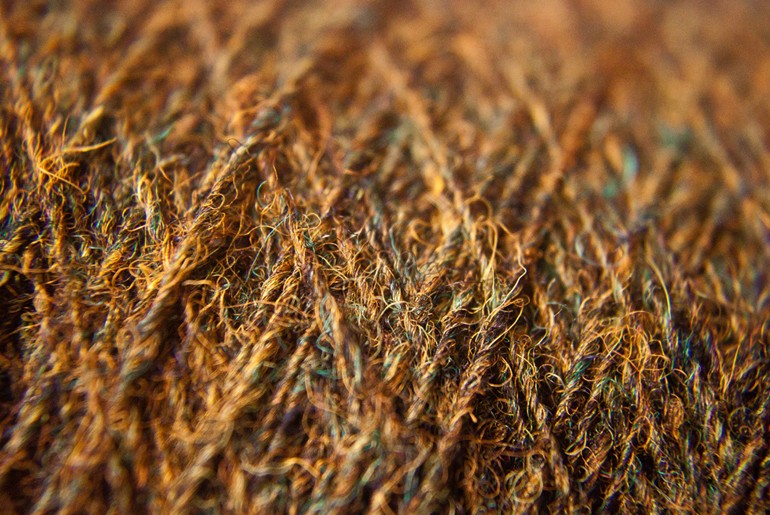
Harris Tweed yarn closeup (c/o HarrisTweed.org)
Harris Tweed begins with the pure virgin wool fleece sheared from Cheviot and Scottish Blackface sheep. Atypically, the the wool is then dyed before weaving, which allows the artisans to make incredibly diverse patterns later in the process.
The fleece is carded through rollers, where the initial yarn is produced. The soft yarn is spun to give it the greatest strength possible, and then wound onto bobbins that can be used for either weft or warp threads. Once supplied to the weavers, all Harris Tweed is handwoven on a manually-powered treadle loom that is often found in the weavers home instead of a factory.
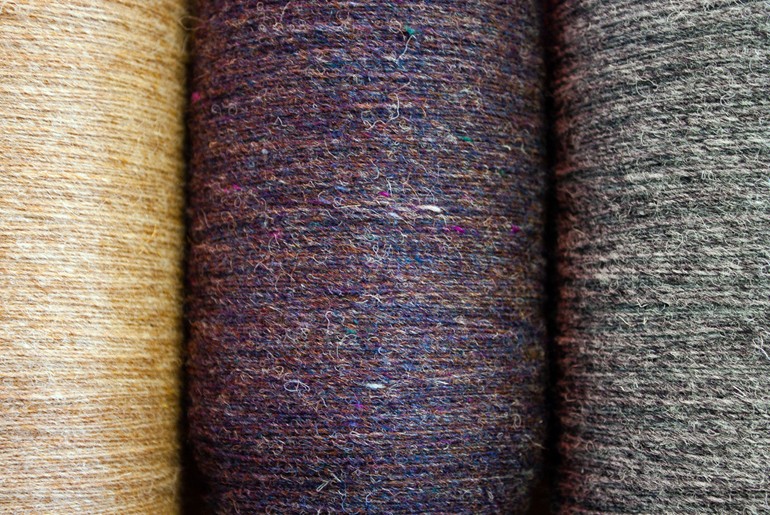
Harris Tweed rolls of yarn (c/o HarrisTweed.org)
The tweed is transferred to a mill in its natural greasy state, where darners pore over the fabric, looking for any imperfections or flaws. Dirt and oil are washed and beaten in sodium carbonate and soapy water before being dried, steamed, pressed and cropped. Final fabrics are inspected by the independent Harris Tweed Authority, who apply the Orb Trade Mark as a mark of authenticity.
Tweed often gets an unfair reputation as a scratchy, stifling wool fabric. But after centuries of production, Harris Tweed is surprisingly soft and breathable, while still maintaining its usefulness and long life.
How Harris Tweed is Used Today
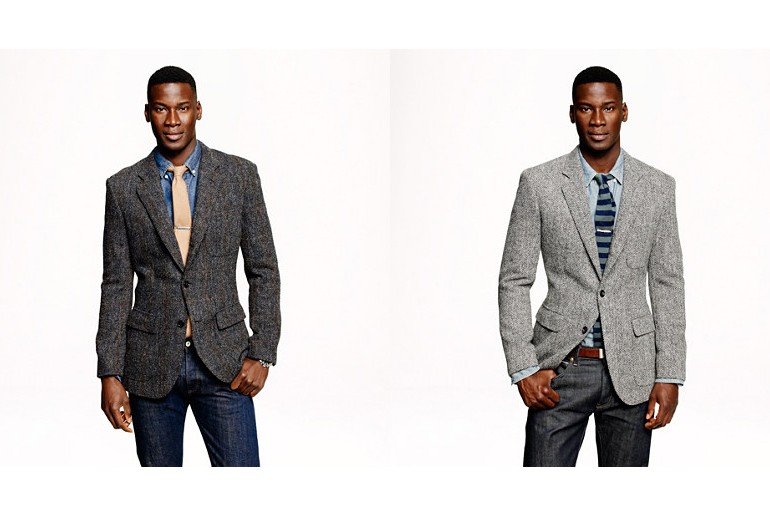
J.Crew Harris Tweed Sportcoats
Like we mentioned earlier, Harris Tweed is frequently seen in outerwear and suiting. Brands like J.Crew and Brooks Brothers frequently incorporate the patterned wool into their sport coats and suiting. Men aren’t the only ones benefiting from the fabric’s popularity; Harris Tweed is also used when womenswear calls for some warmth and complexity.
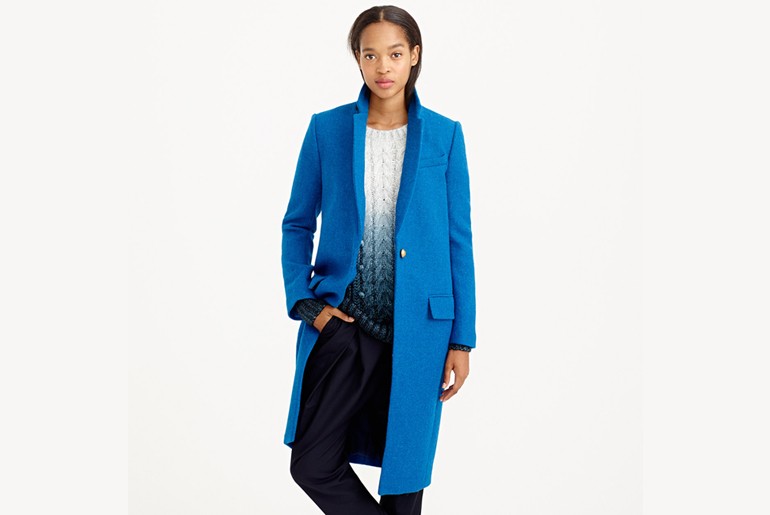
J.Crew Women’s Harris Tweed Topcoat
Beyond clothing, the wool has made its way onto pillows, bags, iPad cases and even sneakers and boots! Converse and Red Wing x Nigel Cabourn are just a couple of footwear brands/collaborations that have incorporated Harris Tweed, presumably making for some toasty feet.
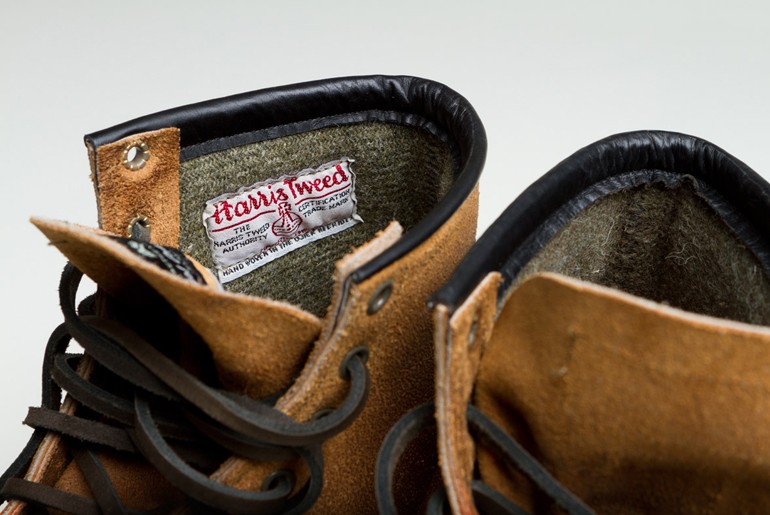
Red Wing x Nigel Cabourn Munson Boots with Harris Tweed lining (c/o B74)
Harris Tweed is in a unique place for a fabric with such sky-high popularity. Since it’s regulated and monitored so closely, it’s able to find itself in more places without having to sacrifice quality. The next time you’re shopping online or at a brick-and-mortar and see a wool with the classic orb trademark, you’ll know it’s as good as it can get.
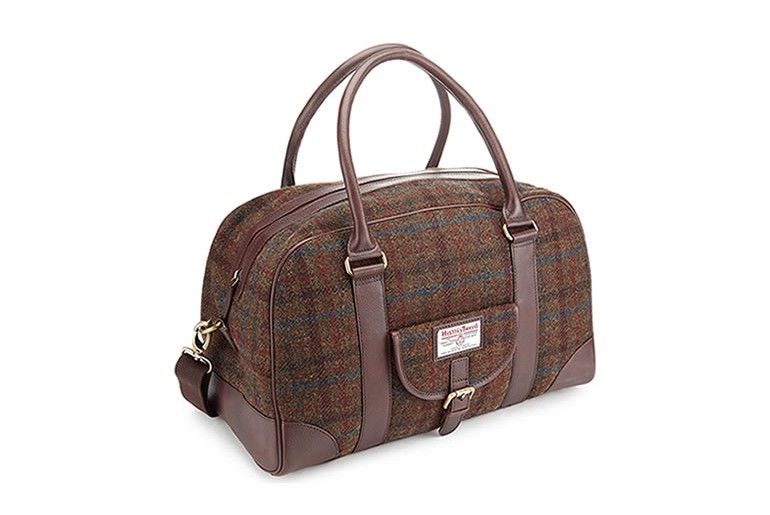
Marks & Spencer Harris Tweed Holdall
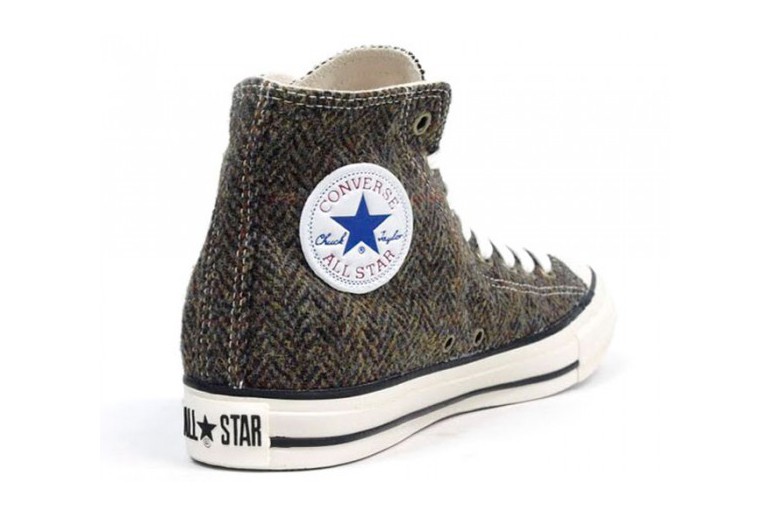
Converse x Harris Tweed Chuck Taylor
